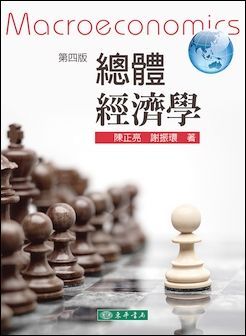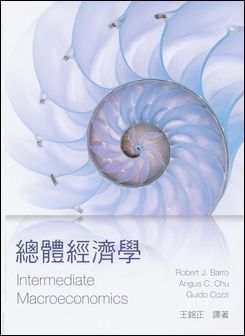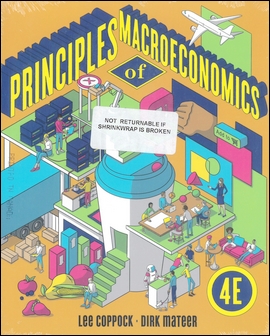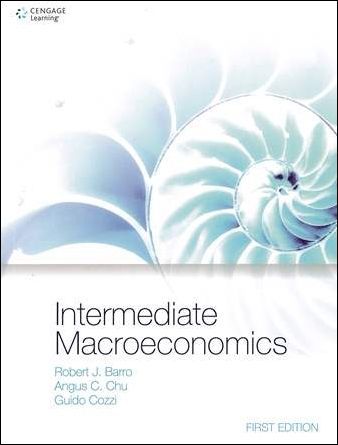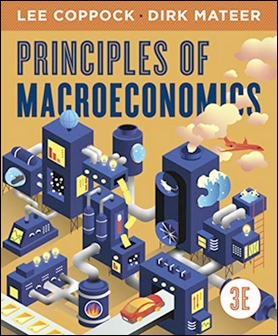書籍分類
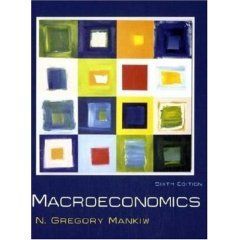
Macroeconomics 6/e
作者:N. Gregory Mankiw
原價:NT$ 1,150
ISBN:9780716767114
版次:6
年份:2007
出版商:Worth Publishers
頁數/規格:578頁
版次:6
年份:2007
出版商:Worth Publishers
頁數/規格:578頁
內容介紹 本書特色 目錄
- Description
Mankiw's masterful text covers the field as accessibly and concisely as possible, in a way that emphasizes the relevance of both macroeconomics’s classical roots and its current practice. Featuring the latest data, new case studies, and a number of significant content updates, the new Sixth Edition takes the Mankiw legacy even further.
- Features
- Balances coverage of short-run and long-run issues, giving students a richer introduction to public policy.
- Integrates Keynesian and classical ideas to familiarize students with the importance of each approach.
- Uses a variety of simple models to clarify complex concepts, because no one model can shed light on all facets of the field.
- Incorporates real-world data and events to show students the relevance of the material.
- Chapter 1. The Science of Macroeconomics has a new FYI box on Nobel Prize-winning macroeconomists.
- Chapter 2. The Data of Macroeconomics has a new section that discusses the establishment survey of labor market conditions and contrasts it with the household survey. There is also a new Case Study about long-term trends in labor force participation.
- Chapter 3. National Income: Where It Comes From and Where It Goes incorporates the Cobb-Douglas production function into the main text, rather than leaving it for an appendix. A new Case Study looks at the link between labor productivity and real wages.
- Chapter 4. Money and Inflation has a new FYI box on the role of credit and debit cards in the monetary system.
- Chapter 5. The Open Economy has a new FYI box explaining the irrelevance of bilateral trade balances. A new section motivates the assumption of a small open economy. And a new Case Study examines why capital doesn't flow to poor countries.
- Chapter 6. Unemployment has a new Case Study on the characteristics of minimum-wage workers. You will also find a much expanded discussion of European labor markets, focusing on the variation of unemployment rates across countries and the decline in hours worked over time.
- Chapter 7. Economic Growth I has a new section discussing alternative perspectives on the role of population in the process of economic growth.
- Chapter 8. Economic Growth II has a new Case Study analyzing the impact of trade on growth. There is a new section on the role of institutions in fostering economic prosperity. Another new Case Study covers Joseph Schumpeter's concept of "creative destruction," including both historical and recent applications.
- Chapter 9. Introduction to Economic Fluctuations begins with a more extensive discussion of business-cycle facts to introduce the subject of short-run economic fluctuations.
- Chapter 12. Aggregate Demand in the Open Economy has a new section on the "impossible trinity"—the inconsistency of allowing free flows of capital, conducting independent monetary policy, and fixing the exchangerate. A new Case Study looks at the debate about the Chinese currency.
- Chapter 15. Government Debt and Budget Deficits has a thoroughly revised case study on the outlook for fiscal policy. A new FYI box examines the effect of taxes on incentives.
- Chapter 16. Consumption contains a new Case Study about what behavioral economics has to say about policies to increase saving.
- Chapter 17. Investment has a new section on alternative views of the stock market, discussing both the efficient markets hypothesis and Keynes’s analogy of the beauty contest.
- Chapter 19. Advances in Business Cycle Theory has a new Case Study summarizing research on the magnitude of menu costs in supermarket chains.
New to This Edition
- Table of Contents
1. The Science of Macroeconomics
2. The Data of Macroeconomics
3. National Income. Where It Comes From and Where It Goes
4. Money and Inflation
5. The Open Economy
6. Unemployment
7. Economic Growth I: Capital Accumulation and Population Growth
8. Economic Growth II: Technology, Empirics, and Policy
9. Introduction to Economic Fluctuations
10. Aggregate Demand I: Building the IS-LM Model
11. Aggregate Demand II: Applying the IS-LM Model
12. The Open Economy Revisited: The Mundell-Fleming Model and the Exchange-Rate Regime
13. Aggregate Supply and the Short-run Tradeoff Between Inflation and Unemployment
14. Stabilization Policy
15. Government Debt
16. Consumption
17. Investment
18. Money Supply and Money Demand
19. Advances in Business Cycle Theory
Epilogue: What We Know, What We Don't



